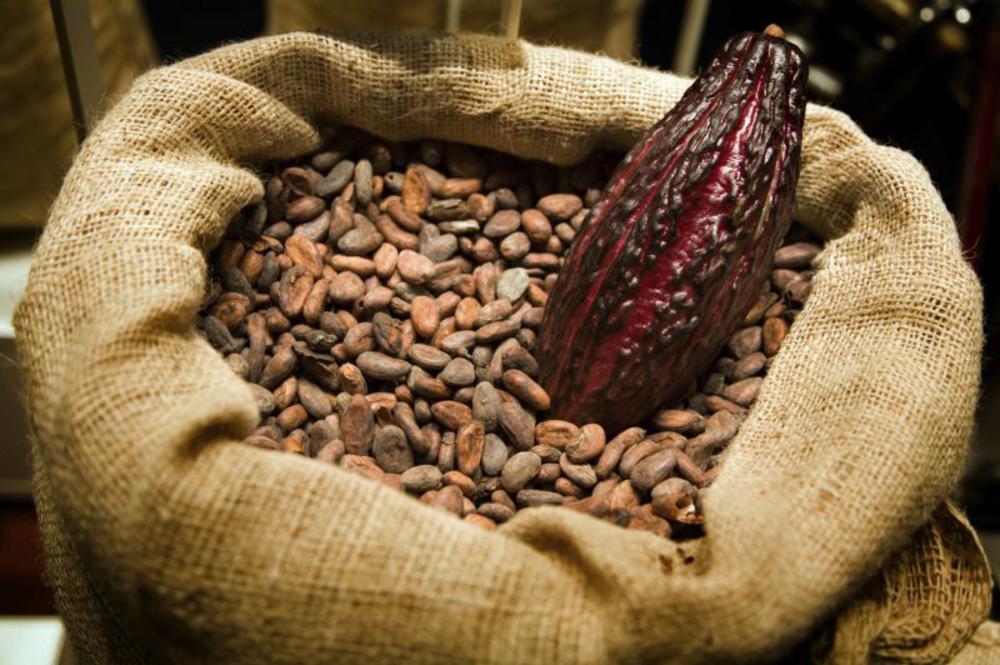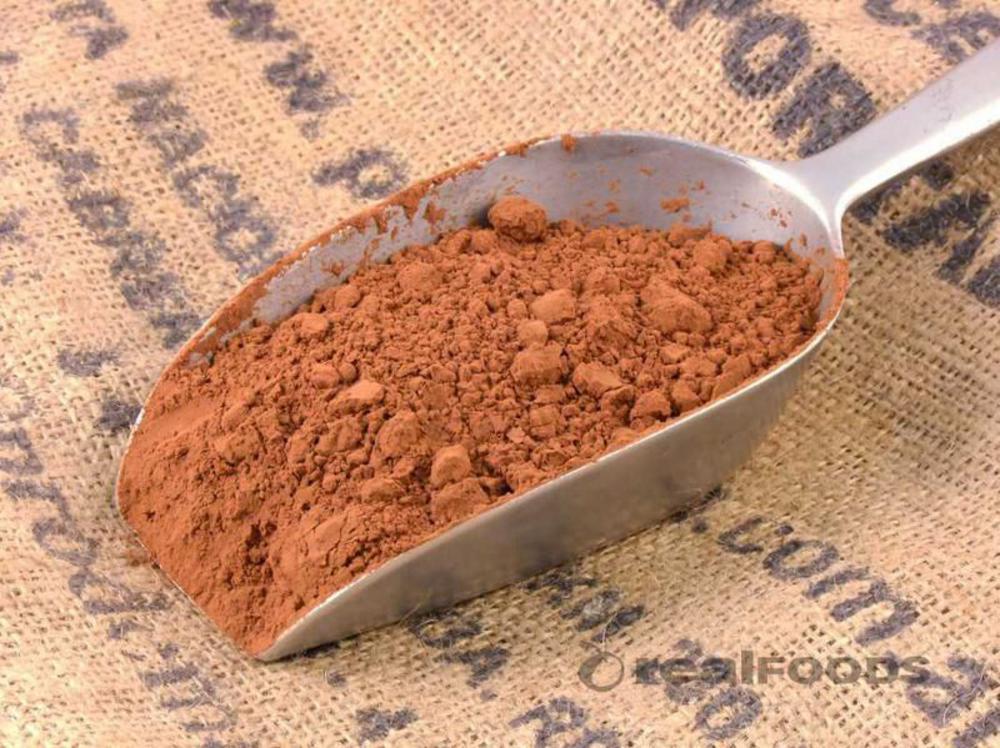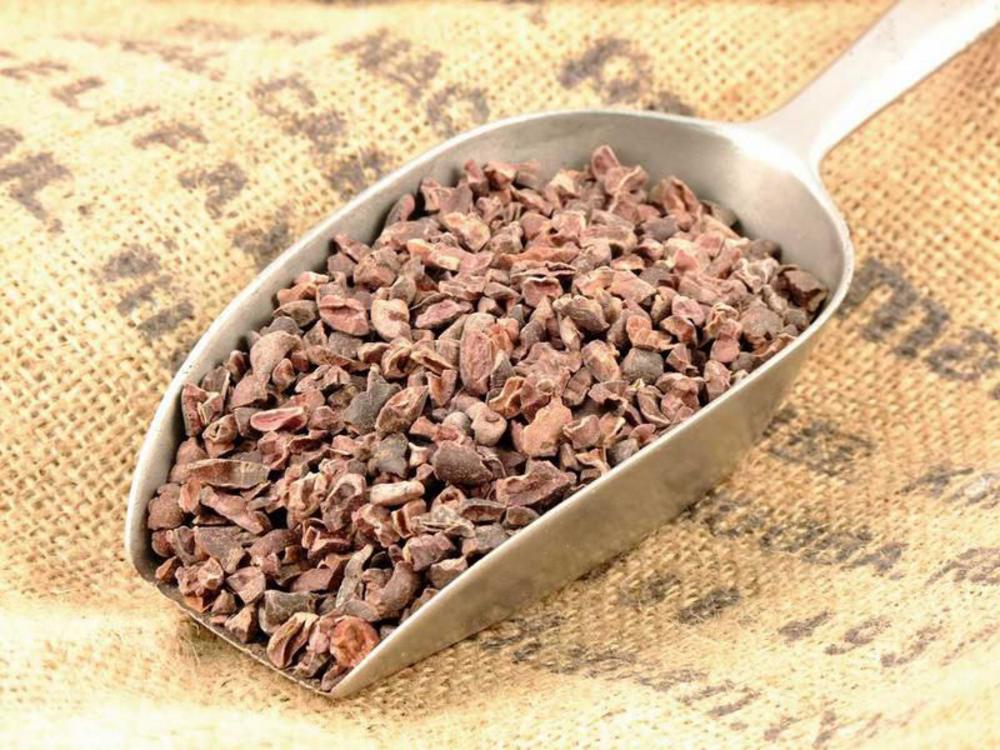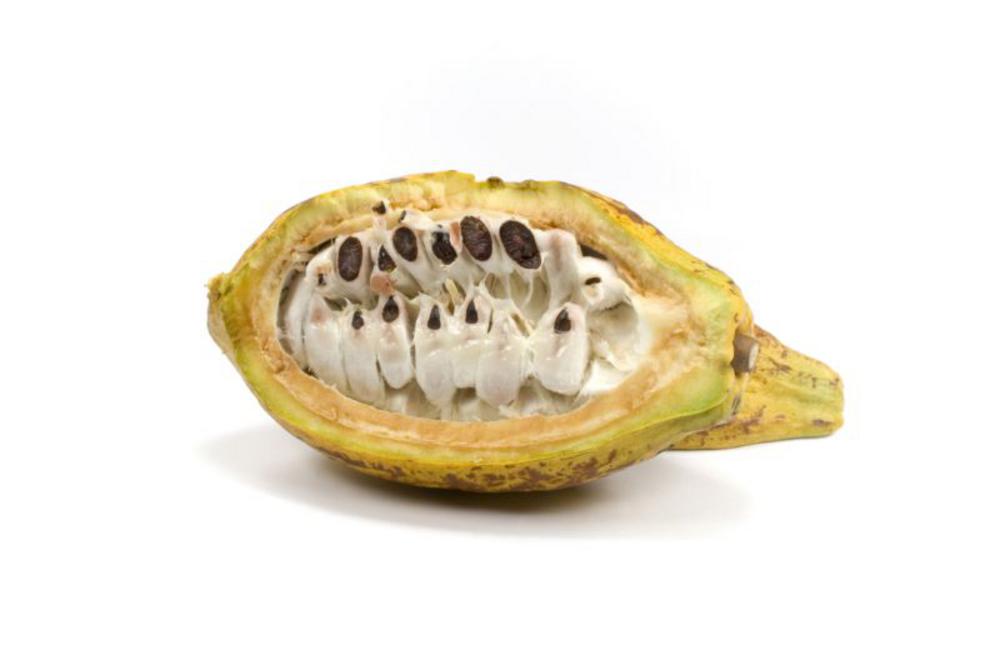We LOVE chocolate here at Real Foods, from organic single origin extravaganzas to heart healthy raw chocolates, we have a great range including Fairtrade and free-from options available in our shops. We also field a lot of questions, so we thought we'd answer some of the most commonly asked ones here. If you've a question that's not covered, please do email us at [email protected] and we'll do our best to find out.

What’s the difference between cacao and cocoa?
Theobroma Cacao is the botanical name for the tree that chocolate is made from. When originally exported, westerners used the name Cocoa. There are debates as to whether this was simply a spelling or translation error from cacao to cocoa, or genuine confusion between cacao and coconuts.
Legally speaking there is no difference, however in practice, cocoa usually refers to the products that are suitable for making hot chocolate and perhaps used in baking, whilst cacao refers to the raw or minimally processed beans, powder, liquor (or paste) and butter. Here at Real Foods we make strenuous efforts to ensure anything labelled cacao is raw, organic or minimally processed and definitely not dutched.
Where can I find these cacao or cocoa products?
Our raw cacao can be found in our Raw Foods Shop, including raw cacao butter, paste/liqour, beans, nibs and cacao powder under Raw Chocolate Ingredients.
Our full range of cacao can be found in our Superfoods Shop. You can find Cacao Powder, Cacao Liquor/Paste, Cacao Butter and Cacao Beans and Nibs. All of these are minimally processed and offer health benefits.
Dutched Cocoa is sweeter and richer in colour than natural or acidic cocoa/cacao. Find our drinking chocolate range here in our Drinks Shop.
 What is Dutched Cocoa?
What is Dutched Cocoa?
Dutched means Dutch-Process. It’s also known as European style or alkalised cocoa. Cacao is naturally acidic, roasted beans that are ground up will have an average acidity of around 5-6. Pure water has a pH of very close to 7, solutions with a pH greater than 7 are said to be alkaline. The picture on the right if of our own brand organic cocoa, which is alkalised and is great for some baking recipes and of course... cocoa!
Dutched cocoa has been washed in a potassium solution that neutralises its acidity. It also gives cocoa a much darker colour and a smoother, mellower flavour. Most cocoa intended for use in drinking chocolates and baking is Dutch Process in Europe, many recipes will require this alkaline ingredient, however if using an American recipe please be aware that they generally refer to natural or acidic cocoa.
This is important in recipes, dutched cocoa has a neutral pH and so it cannot be used in recipes that rely on sodium bicarbonate to leaven it. This is because bicarbonate reacts with the acidic component in batter to release carbon dioxide. If you’ve no acidity because you are using dutched cocoa in the recipe, your cake won’t rise! Dutched cocoa is usually used with baking powder which contains an acid to activate its bicarbonate.
Why is calcium carbonate in the ingredients for cocoa?
Calcium carbonate is the most common of the alkali solutions that are used for creating dutched cocoa. It is only present in processed cocoas.
 What’s the difference between cacao beans and cacao nibs?
What’s the difference between cacao beans and cacao nibs?
Cacao beans are the entire bean that is grown in the cacao pod. Usually cacao beans are roasted and then separated into the husk and the nibs, this process is called winnowing. The raw cacao products we sell do not roast their beans, meaning it is far more labour intensive to separate (roasting loosens the husk). The picture on the right is of organic, raw cacao nibs. THe picture at the top of the page is of unprocessed cacao beans and a cacao pod.
Is cacao actually nutritious?
Yes! The less processed the cacao bean, the more nutrients you will gain from it. The nutrients in raw cacao have been linked to lowering blood pressure and improving circulation from the flavonols and theobromine content. They may help neutralise free radicals from their high antioxidant levels, raw cacao powder contains twenty times the antioxidant count of blueberries and three times more than green tea. Raw cacao could also help promote cardiovascular health. Cacao also contains phenylethylamine (PEA), serotonin and which are compounds linked to feelings of relaxation and satisfaction and a reduction in feelings of depression, Cacao also releases the ‘bliss’ chemical anandamide, possibly explaining why so many people love chocolate!
 What’s the nutritional information on a cacao bean?
What’s the nutritional information on a cacao bean?
A single cacao bean contains 54% fat (that’s the cacao butter), 31% carbohydrates (mainly fibre with a tiny amount of sugars), 11% protein (including arginine, glutamine and leucine), 3% polyphenols (flavonols and proanthocyanins) and less than 1% trace minerals including magnesium, iron, copper and phosphorus.
What’s cacao liquor?
Cacao liquor is also known as Cacao paste and is made by pressing the whole cacao bean and heating it (at low temperatures for any of the raw products) to create a paste, instead of separating out the beans into cacao butter and powder. Simply melt the liquor, add some sweeteners and flavours and you’ll have chocolate!
What different types of cacao are there?
There are three main cultivars; Criollo, Forastero, Trinitario. These designations were set up over 100 years in Venezuela when it was the first provider to the European Cocoa markets. Criollo means native, and was originally used to refer to the native Venezuelan stock. Forastero means foreign whilst Trinitario means from Trinidad. Chocolatiers often mix the different qualities and flavours of the beans, for example getting a robust chocolatiness from Forastero and adding Criollo for aroma. It is often difficult to be precise about the type as natural cross-pollinations have occurred and the fermenting and processing of the beans plays a large part in their flavour profile.
What is Criollo?
Criollo (pronounced cree-yo-yo) is a cultivar of the cacao tree. It originated in Central America and Mexico and creates exceptionally high-quality cacao beans. It is mainly cultivated in South and Central America. Criollo beans are often mixed with other varieties when making chocolate. It is considered a high-grade and is often referred to as fine or flavour cacao beans. Criollo varieties include Porcelana, Ocumare 61 and Chuao. It is not bitter and extremely aromatic.
What is Forastero?
Forastero is the most highly cultivated of the cacao trees. It produces roughly 80-90% of the world production of cacao. It grows quickly and has a high yield. This produces the bulk of the world’s chocolate. However there are some exceptionally high quality Forastero cacao beans including the Ecuadorian Cacao Nacional or Arriba.
What is Trinitario?
Trinitario is a spontaneous hybrid between Forastero and Criollo that occurred in Trinidad around the 1730s. It has the aroma of the Criollo and the disease resistance and productivity of Forastero. It is found in countries as far-flung as Java, Papua New Guinea, Venezuela and Ecuador. Trinitario is a fine or flavour cocoa used in high-grade chocolates apart from the Cameroon Trinitario which is usually classified as bulk produce. The Venezuela Carenero and Rio Caribe varieties are both Trinitario and are both considered exceptional cacaos.
What is Nacional?
Nacional is believed to be a member of the Forastero family but is often linked with Criollo due to the exceptionally fine flavours. Mainly grown in South America, west of the Andes, it is disease prone and very difficult to grown, but it has an excellent aroma and is prized. Pure Nacional was rediscovered in Peru a few years ago, as it was undisturbed for so long the cacao beans it produces are white and create a very mellow chocolate. Ecuadorian Nacional or Arriba are also very high quality beans with a highly prized aroma.
What is cocoa mass?
Cocoa mass is the chocolate solids and the cocoa butter. If a bar says 82% cocoa mass, that means that 18% is probably sugar and flavouring, whilst the 82% is pure cocoa. However, cocoa mass often doesn’t tell you high a percentage of cocoa butter is carried.
So a 90% Dark Chocolate bar is better than an 80% one?
Depends on your taste! Some people prefer sweeter or milkier chocolates; others enjoy bittersweet hits of chocolate. 90% will mean there is more cocoa mass than the 80%, but if the chocolate used is a particularly sweet and aromatic criollo bean bar it may taste sweeter than an 80% bar made with robust and bitter beans.
What is raw cacao or raw chocolate?
Raw foods are not heated to above 42 degrees. This means that the beans will not be roasted, they will be sun-dried instead. Raw Cacao is often more expensive simply due to the more labour intensive work required. Raw Cacao retains the maximum amount of nutrition and is often used to give smoothies and raw recipes a boost of nutrition and taste. It also often gives a depth of flavour that can be difficult to replicate with roasted cacao.
What’s single origin chocolate?
Chocolate that is made from a specific country or region’s beans. Peruvian chocolate made solely with Peruvian beans would be single origin of Peru. Often it is used to highlight the flavour of a particular bean. For example Willie’s Cacao is made in Devon using traditional methods; however many of his bars are single origin, not just of Peru but of specific regions, beans or estates within Peru (or Ecuador, Venezuela etc). Single Estates are even more specific, created purely from one estate or plantation’s produce.
What does bean-to-bar mean?
A lot of chocolatiers like to make their bars from scratch and supervise everything from the roasting, to the grinding of the beans, to the moulding of the bar. Bean to bar chocolates are often made with single estate or origin cocoas as the chocolatier is ensuring a steady supply of their favoured beans and reasonable prices to the farmers. You can buy in bulk cocoa mass and create perfectly good chocolate but for many chocolatiers they prefer to control the entire process, often for ethical reasons. For example Divine Chocolate (who make Fairtrade certified chocolates including the ever-popular Dubble bar for kids) are bean-to-bar chocolatiers, they co-own the company with a Ghanaian co-operative who produce the beans. Pacari Chocolate are also bean-to-bar, they are biodynamically certified and want to ensure their single origin organic Ecuadorian source is protected and paid fairly, securing the future of their rare beans and ensuring the biodiversity and sustainability of the cacao growing.
By Kim Betney